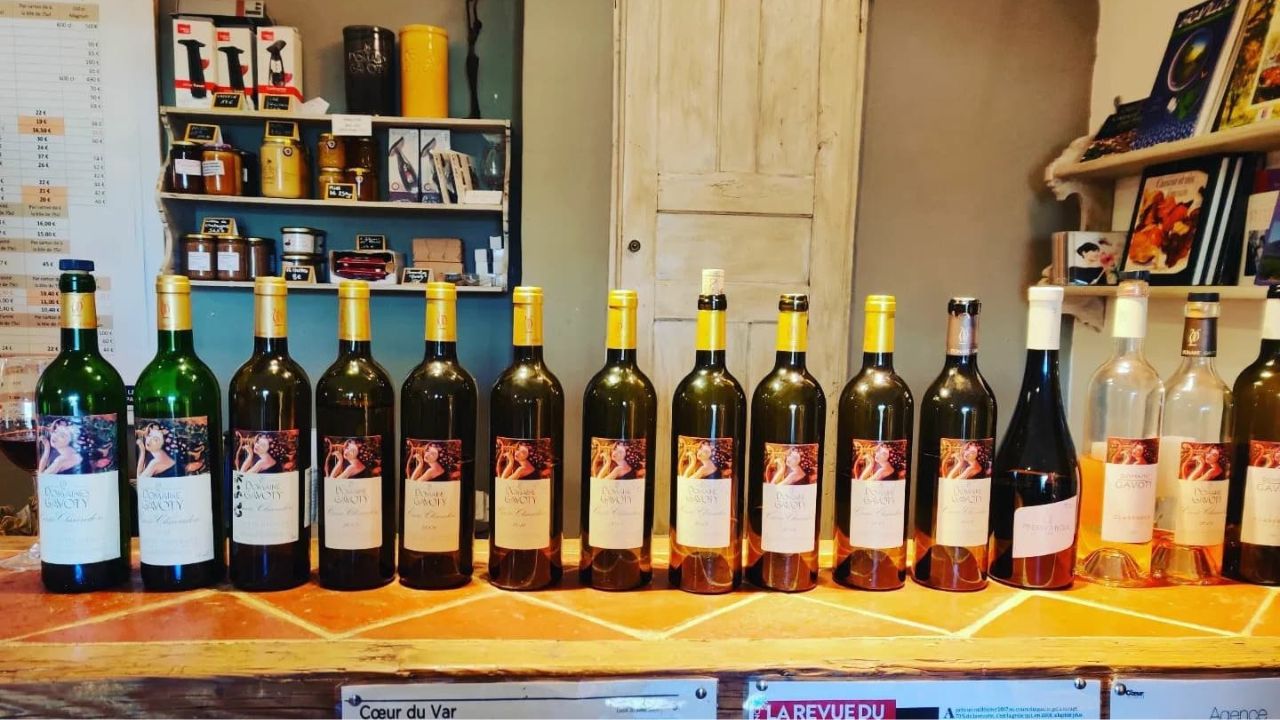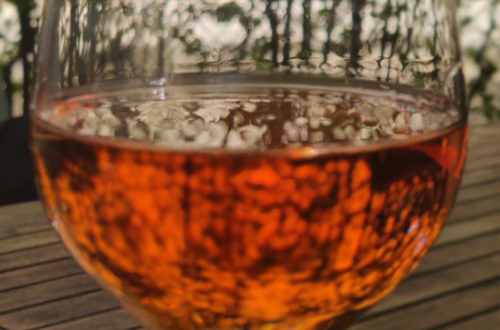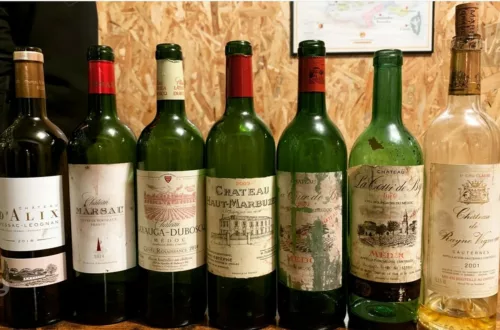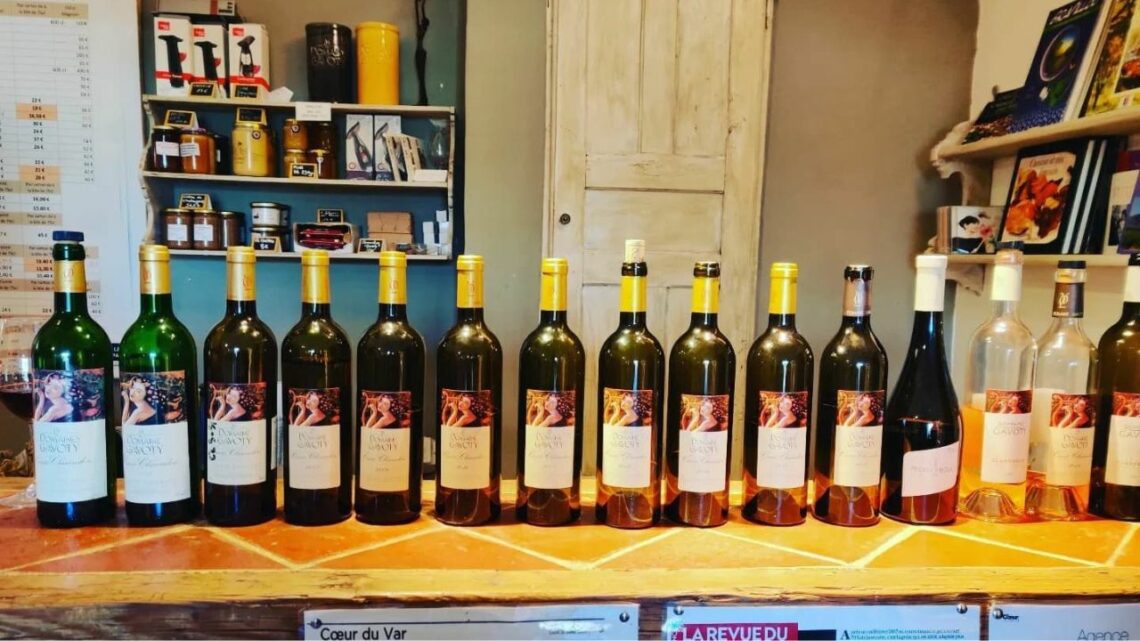
Vermentino Grape Variety
Hey there, wine enthusiasts!
Today, we’re diving into the world of Vermentino, a grape variety that brings a touch of sunshine to the white wines of Provence.
But hold on, there’s a twist! In Provence, Vermentino goes by another name: Rolle.
Vermentino is more Italian-style so you’ll find it mostly in Italy and Corsica and in Provence, you’ll get the name Rolle.
So ready to discover this Rolle/Vermentino grape variety?
The Vermentino Grape: A Mediterranean Gem
Rolle, or Vermentino as it’s known in other parts of the world, has a rich heritage with roots that stretch back centuries.
While its exact origins remain a bit fuzzy, most evidence points to Liguria, a coastal region in northwestern Italy.
Imagine ancient trade routes carrying grapevines along the Mediterranean Sea, eventually leading Rolle to its new home in sun-drenched Provence.
One thing’s for sure: Rolle thrives in hot and dry climates.
Unlike some grapes that shy away from the sun, Rolle embraces it. The long, sunny days and warm nights of Provence create the perfect environment for this grape to ripen fully, developing its signature flavors and aromas.
Now, let’s talk about the color. When you pour a glass of Rolle, you’re greeted by a beautiful light yellow hue, hinting at the bright and refreshing character waiting to be discovered.
But the magic of Rolle goes beyond its appearance.
Take a sip, and you might be captivated by scents of white flowers like hawthorn and linden, followed by a burst of citrusy goodness – think grapefruit, lemon, and a touch of lime. Sometimes, hints of pear or even exotic fruits like pineapple can emerge, creating a truly enchanting bouquet.
The beauty of Rolle is its balance. These wines are typically light-bodied and refreshing, with a vibrant acidity that keeps them lively on the palate.
But there’s also a touch of creaminess, a subtle richness that adds complexity and depth.
Here’s a little secret: Rolle thrives on dry, meagre soil. Think of it as the opposite of a luxury spa for grapevines.
These challenging conditions force the vines to dig deep for water and nutrients, concentrating their energy into producing smaller, more flavorful grapes.
The Versatility of Rolle: From Vine to Wine
So, we’ve established that Rolle loves the sun and thrives in challenging conditions.
But how does it compare to other well-known white grape varieties?
Think of it this way: Sauvignon Blanc might be the energetic life of the party, bursting with zesty acidity and grassy notes.
Grüner Veltliner, on the other hand, is the sophisticated intellectual, offering a complex mix of minerality and white pepper aromas.
Rolle, our Provençal friend, sits somewhere in between.
It shares the freshness of Sauvignon Blanc with a touch more richness, while also offering hints of minerality that can sometimes evoke Grüner Veltliner.
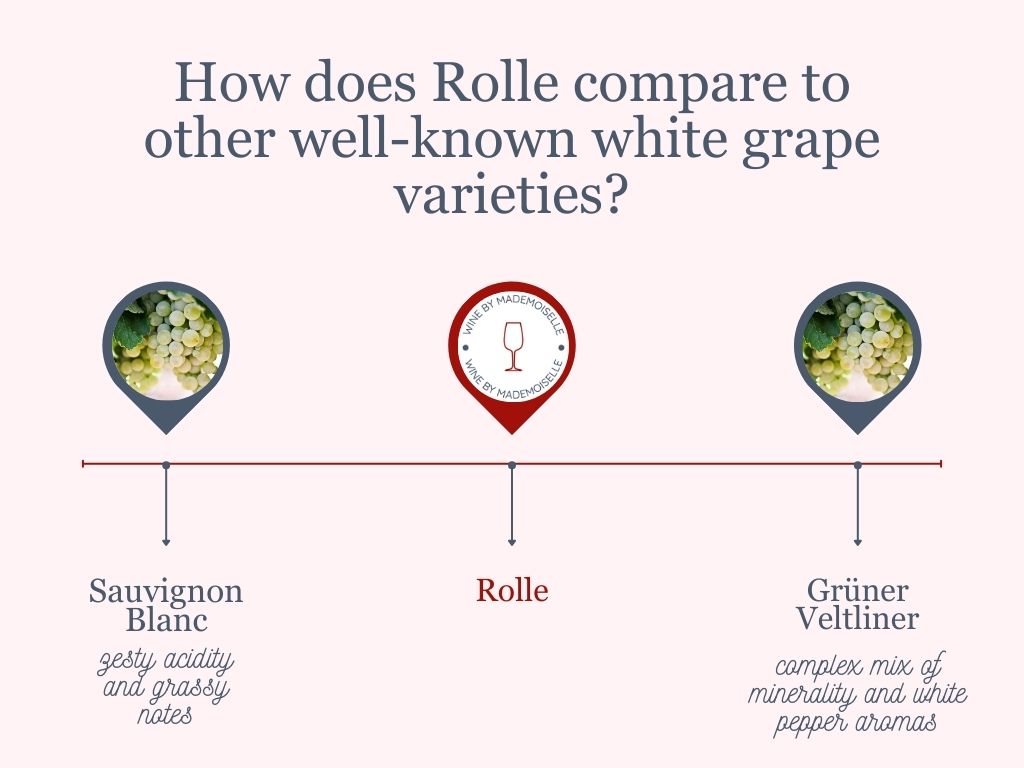
But Rolle’s final character isn’t just about the grape itself. The magic happens in the hands of the winemaker, where the influence of terroir and vinification techniques come into play.
For example, grapes grown on limestone-rich soils might express a touch more minerality in the finished wine.
On the other hand, grapes grown in cooler microclimates might retain a higher level of acidity, resulting in a lighter and more vibrant style.
The choice of whether or not to use oak barrels also plays a role.
Unoaked Rolle wines tend to be fresher and more fruit-forward, highlighting the grape’s natural citrusy and floral aromas.
Oaked Rolle, on the other hand, takes on a bit more complexity. The subtle influence of oak adds a touch of spice, vanilla, and sometimes even a hint of toastiness.
And here’s another interesting fact: Rolle wines can age surprisingly well.
I tasted some 1989 Rolle….which were sooo fresh!
Over time, the fruit character softens, giving way to more nuanced aromas like honey, nuts, and even a hint of beeswax.
Some Rolle wines, particularly those aged in oak, can also develop a fascinating minerality, reminiscent of the petroleum notes found in aged Riesling.
The Art of Aging: Rolle’s Journey to a Bellet Wine
Speaking of complexity, let’s delve into the fascinating world of Bellet wines.
This unique appellation, located just north of Nice, is one of the few places in Provence where Rolle truly shines as the star of the show.
Here, Rolle contributes significantly to the reputation of Bellet wines. The combination of sun-drenched vineyards, meticulous viticulture, and the influence of aging in oak barrels allows Rolle to express its full potential.
These wines are known for their beautiful balance, offering a core of citrus and pear aromas intertwined with subtle notes of vanilla and spice from the oak.
But the magic doesn’t just happen in the glass.
Bellet wines are meant to be savored alongside a delicious meal. Think of fresh seafood dishes, creamy cheeses, or even a light chicken salad. The bright acidity of Rolle cuts through richness, while the subtle oak influence adds a touch of elegance, creating a truly memorable dining experience.
Here’s a final thought: Sustainability and quality go hand-in-hand when it comes to Rolle production.
Provençal winemakers are increasingly focusing on sustainable practices, ensuring the long-term health of their vineyards and the environment.
By employing techniques like organic viticulture and responsible water management, they’re not just protecting the land, but also contributing to the unique character of Rolle wines for generations to come.
Conclusion : Vermentino Grape Variety
So, the next time you raise a glass of a refreshing Rolle or a complex Bellet wine, remember the fascinating journey this grape has taken.
From its sunny origins in Liguria to its sun-drenched home in Provence, Rolle continues to fascinate wine lovers.
And by the way, why not book a tout to Château de Bellet if you’re staying in Nice?





